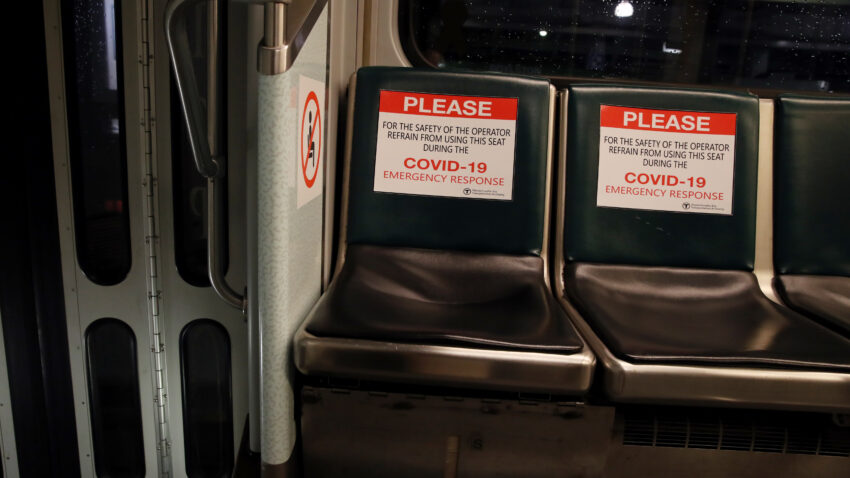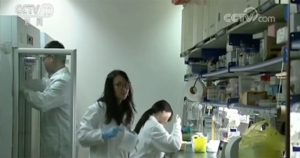Once the work-from-home era of the COVID-19 pandemic comes to an end, most folks will eventually have to return to their typical slog into work — that much is known.
But what rush hour will look like on Boston’s public transit system is not a certainty right now, not to mention the crowds of pedestrians that will return to the city’s streets.
City Councilors Michelle Wu and Liz Breadon are calling on their colleagues to consider what needs to be done to keep people safe in transit after Gov. Charlie Baker’s stay-at-home advisory lifts, which is currently set to happen on May 18.
A hearing order filed Wednesday asks officials to discuss any needed changes for their “safe streets” efforts both during and after the coronavirus pandemic. Considerations include everything from protecting the health of MBTA riders and drivers to maintaining the space needed for pedestrians to social distance on narrow sidewalks, the councilors say.
“This is an issue about thinking of the space we have, of the modes of travel that we have, how can we protect physical distancing now as well as put in place the changes so as people are thinking about how to get back to work in weeks to come, we’re not immediately going back to more cars everywhere only because people are afraid of getting on public transit thinking it will be too crowded,” Wu told the council.
Cities the world over are already rolling out practices to protect passengers and staff on public transit, as their communities try to return to some sense of normal and their economies reopen in the wake of COVID-19.
In Europe, for example, floor stickers indicate how far apart bus riders in Milan should stand from one another, while in the Netherlands, longer trains are allowing for more space among passengers. Berlin, meanwhile, has opened additional travel lanes to cyclists navigating its streets.
“This is a global pandemic,” Breadon said. “Cities across the world are further along in this process. They’re figuring out things that work, and they’re also identifying things that don’t work. We have a lot to learn from their experience, their successes, and their failures.”
.@wutrain , myself and the @BOSCityCouncil are working on some ideas for safer streets Kate! Happy to work with Councilor Wu to introduce this hearing order next week. #Covid_19#Bospoli #Mapoli https://t.co/Qk3EXMpdgZ pic.twitter.com/5P1u8Ck7Xu
— Councilor Liz Breadon (@LizBreadon) April 24, 2020
Similar kinds of changes and tweaks are already being considered at the federal level in the United States.
The White House is in the process of finalizing guidelines drafted by the Centers for Disease Control and Prevention for reopening the economy in three phases, The Washington Post reports. Transit is a key focus of those recommendations.
“Mass transit is critical for many Americans to commute to and from work and to access essential goods and services,” the draft guidance says. “This guidance provides considerations for mass transit administrators to maintain healthy business operations and a safe and healthy work environment for employees, while reducing the risk of COVID-19 spread for both employees and passengers.”
Some of the many practices under consideration include roping off seats, checking temperatures of workers regularly, and indicating where exactly passengers should stand while onboard.
Still operational through the pandemic, the MBTA has already taken certain precautions and changes, such as asking bus and trolley passengers to enter from the rear doors to keep away from drivers and roping off areas near operators to allow for social distancing.
To our passengers who work in essential jobs, we thank you. To those who need access to essential services, we’re here to help. Please remember to thank your driver and to maintain a safe social distance from them and your fellow #MBTA passengers. We’re in this together! #COVID19 pic.twitter.com/uT2HgCmraG
— Boston Carmen’s Union, Local 589 (@carmensunion589) April 15, 2020
Vehicles and stations are regularly cleaned and sanitized while the system operates on reduced service to continue to support the transit needs of essential workers, among other changes.
For employees, the MBTA has distributed personal protective equipment, including masks, gloves, eyewear, and hand sanitizer; conducts regular temperature checks at about a dozens sites where employees start their shifts; and tests about 30 employees for the coronavirus a day on average, according to spokesman Joe Pesaturo.
As of Wednesday, there were 83 active COVID-19 cases among MBTA employees, including 39 bus operators, four subway motorpersons, and six trolley motorpersons, Pesaturo said in an email. Forty-four employees have recovered after testing positive, and one has died from coronavirus-related complications.
The MBTA hasn’t offered specifics of what a recovery plan would look like for when the economy transitions back to pre-crisis operations.
“We’re beginning to look at this in many different ways across the authority,” General Manager Steve Poftak said at the MBTA’s Fiscal and Management Control Board meeting Monday. “I think one of the challenges here is none of us are sure exactly how this is going to unfold.”
Poftak said the agency is putting together a working group to develop transition plans and is looking at “future service level scenarios” for the summer and fall schedules so the system has flexibility in its operations.
“I think one of the things we can be sure of is that the demand and our responsibility to provide PPE is going to remain,” he said. “We want to make sure we have a steady supply chain so that we have what we need to provide to our employees.”
According to Poftak, officials also have to look at future budget modeling and planning to determine what the agency needs to operate service moving forward. The MBTA recently received $827 million in aid as part of the federal coronavirus pandemic response, but Poftak said “it is unlikely to fund us at the level we would wish.”
“It’s obviously a significant amount of money, but we’re going to have to go through a pretty extensive budget development process to understand just how far that money takes us,” he said.
Councilor Kenzie Bok, speaking to the hearing order introduced Wednesday, said officials “really have to re-think” how they approach transit matters and street infrastructure in the wake of the virus.
A lot of their work could overlap with initiatives policymakers were already thinking about, such as further measures to protect people on the city’s streets, Bok said.
Wu noted that a cyclist was struck and killed near Massachusetts and Harrison avenues on April 22.
And Bok said that her district, which includes Mission Hill, Kenmore, Fenway, Back Bay, Beacon Hill, and the West End, has seen many motorists speeding through.
“This is not a short-term thing as we all know,” Bok said, regarding the coronavirus ramifications. “We really have to think about what we’re going to do in the new normal.”
Material from the Associated Press was used in this report.



















